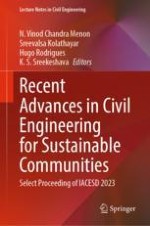2024 | OriginalPaper | Buchkapitel
Predicting the Porosity of SCM-Blended Concrete Composites Using Ensemble Machine Learning Models
verfasst von : Saad Shamim Ansari, Sayed Ali Farid, Syed Ahmad Abdullah, Mohammad Abuzar, Mohammad Swaleh Ahmad, Syed Muhammad Ibrahim
Erschienen in: Recent Advances in Civil Engineering for Sustainable Communities
Verlag: Springer Nature Singapore
Aktivieren Sie unsere intelligente Suche, um passende Fachinhalte oder Patente zu finden.
Wählen Sie Textabschnitte aus um mit Künstlicher Intelligenz passenden Patente zu finden. powered by
Markieren Sie Textabschnitte, um KI-gestützt weitere passende Inhalte zu finden. powered by
